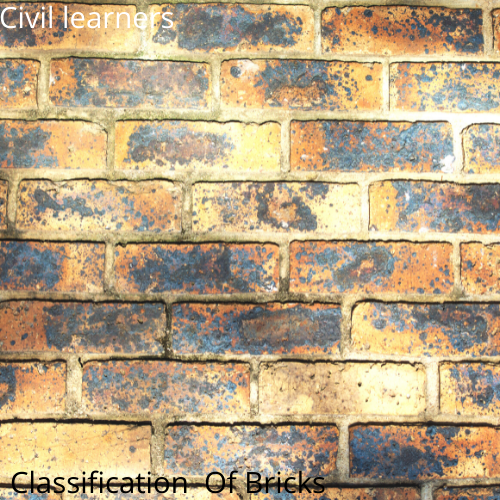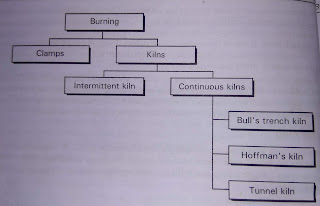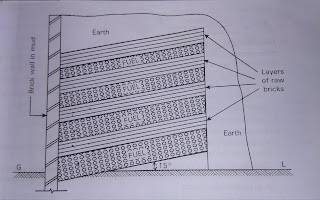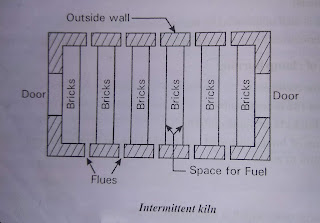Burning of bricks | Clamps | Kilns – civillearners
Burning:
1. To impart hardness and strength to the bricks.
2. To increase the density of the bricks so that they will absorb less quantity of water.
The bricks may be burnt in any one of the following:
a) Clamps
b) Intermittent kilns
c) Continuous kilns.
Clamps are temporary structures, and they are used to burn bricks on small scale, but kilns are permanent structures and are used to manufacture bricks on a large scale basis. The burning of bricks undergoes the following three main stages:
Dehydration (400 to 650°C):
The dehydration or smoking stage is the process of removal of water content that remained in the bricks after drying.
Oxidation period (650 to 900°C):
Kilns may be underground, eg. Bull’s trench kilns, or overground eg. Hoffman’s kiln. the shape of the kilns may be rectangular, circular, or oval-shaped. If burning is continuous, it is a continuous kiln. e.g. Bull trench and Hoffman’s kilns.
On the other hand, if the process of burning is discontinuous, it is an intermittent kiln.
Also Visit: Manufacturing process of bricks
CLAMPS
This consists of dried bricks and fuel placed in alternate layers. The operations involved in clamp burning is as follows:
1. The floor is prepared with an upward slope of about 15′. Its shape in the plan is trapezoidal.
Advantages of clamp burning:
1. It is economical.
2. This system is well understood by the uneducated brick burners.
3. The clamp bricks are tougher than kiln bricks due to gradual burning and cooling.
Disadvantages of clamp burning:
1. It is a very slow method.
2. Regulation of fire is not possible.
3. Outturn of bricks is not quite uniform.
4. Large portion of bricks is distorted and cracked due to their settlement when the fuel at the bottom is burnt to ashes.
KILNS
A kiln is a large oven that is used to burn bricks.
i) Intermittent kilns: These kilns are intermittent in operation which means that they are loaded, fired, cooled, and unloaded
They are classified in two ways:
a) Intermittent Up-draught kilos
b) Intermittent down-draught kilns
a) Intermittent Up-draught kilns:
These kilns are in the form of rectangular structures with thick outside walls, The working of the kiln is as follows:
Such intermittent up-draught kiln gives three types of bricks:
(i) Lower courses over burned to hardness
(ii) Middle courses well burned.
(iii) Top courses unburned.
The bricks manufactured by the intermitted up-draught kilns are better than those obtained
from clamps.
b) Intermittent down-draught kilns
These kilns are rectangular or circular in shape. They are provided with permanent walls and a closed light roof. The floor of the kiln has openings that are connected to a common chimney stack through flues. The working of this kiln is more or less similar to the up-draught kiln. But it is so arranged in this kiln that, hot gases are carried through vertical flues up to the level of the roof and are then released. These hot gases move downward by chimney draught and in doing so, they burn the bricks.
Also read: Imp Topic – Various test on bricks
Recommended: Classification of bricks



